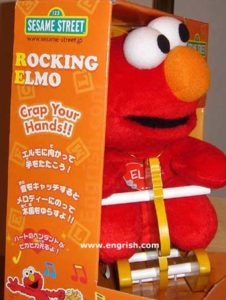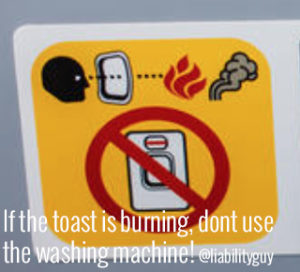People do stupid things all the time so why shouldn’t you be able to get insurance for that? Or maybe you can? Read on to find out if you need Stupidity Cover today.
Thank you to everyone that read my last blog. The response from brokers who are interested in liability has been quite amazing. I thank you for that. All 5 of you. So now that we all understand what a liability is and who the mysterious third party is, lets get real here. Let’s just tell it like it is; liability cover in many ways is just human stupidity insurance. Nine times out of ten, either someone has done something stupid in the business, which leads to a customer getting injured or the customer has done something stupid which leads to them suffering some kind of harm. Its a circle of idiocy.
Many product liability claims stem from a moment of sheer Darwinian brilliance where a consumer imagines that they have found a better way to use a product other than that specified by the manufacturer. Take for example the genius in this video clip:
A drill should not be used to eat a mielie (that’s corn on the cob if you’re reading this outside SA). Nothing is foolproof, because the fool is extremely inventive. Without the fool we would have far less content on Youtube, the social media platform built upon the broken bodies of individuals who push the boundaries of stupidity, for our entertainment every day.
In SA, like many territories around the world, we have some pretty robust consumer protection legislation. This means we are protected, often even when we’re being stupid. The Consumer Protection Act places a big responsibility on manufacturers and many others in the supply chain to ensure that the instructions and warnings on products are clear. See this article on the subject.
Fortunately most product liability insurance policies do recognize that the label is a part of the product, so if the injury happens as a result of poor labeling, the claim should still be covered. There is of course an onus on the supplier – don’t you love the word “onus“? Sounds so…anatomical. If you don’t observe the onus, you could soon see your anus. I’m the master of lavatorial digression, please forgive me.

As I was saying, there is an onus on the supplier to comply with local legislation when putting the product into the Republic of South Africa. Businesses that are importing stuff from say, China, shouldn’t assume that their insurers will pick up the tab every time someone chokes on a squidgy because the label was in Mandarin. Mandarin is a language spoken in China to those of you less travelled. It is also a type of fruit. Labels cannot be in Chinese or Fruitese in South Africa.
So obviously warnings and instructions need to be in a language people understand in that territory. SA businesses do not produce manuals in all eleven languages. I remember buying a TV set once and after removing the set from the box, discovering an operating manual the size of a phone book. The book weighed almost as much as the TV and just before I panicked and handed it to my teenage son for interpretation, I realized that the instructions in English only made up about 5 pages. The balance of the tome was in a language from almost every country in the world. To be honest, I may as well have read the Greek section.
I really love this bit in our CPA. The part that tells you about plain language reads:
“For the purposes of this Act, a notice, document or visual representation is in plain language if it is reasonable to conclude that an ordinary consumer of the class of persons for whom the notice, document or visual representation is intended, with average literacy skills and minimal experience as a consumer of the relevant goods or services, could be expected to understand the content, significance, and import of the document without undue effort, having regard to:
– The context, comprehensiveness and consistency of the notice, document or visual representation;
– The organisation, form and style of the notice, document or visual representation;
– The vocabulary, usage and sentence structure of the notice, document or visual representation; and
– The use of any illustrations, examples, headings, or other aids to reading and understanding.”
Plain and simple right?
The bottom line is that businesses have to assume that their customers are going to do something stupid and should factor that into the instructions and warnings. They also need to spend time thinking about the way in which the information will be presented. 11 official languages in SA do present a logistical problem but as the CPA suggests, diagrams are a useful alternative to text. That is why some businesses have cleverly done away with wordy labels and instructions and have instead opted for pictures. Nowhere is this more evident than in the air travel business. Airlines have to contend with a whole host of language problems so they very effectively use pictures to get their message across clearly:

Keep it plain and simple. I’m the LiabilityGuy.
Note that as I am the LiabilityGuy I have to include a suitable disclaimer so please don’t treat any of these blogs as legal or financial advice. Be sure to chat to your broker if you’re a policyholder or if you’re a broker yourself, chat to your favourite insurance underwriter (follow my eyes) to get some detailed training or product information. The opinions expressed here are all my own, written in my personal capacity.